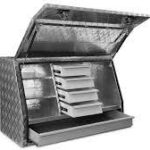Towing is the act of connecting two or more items to pull behind a specified source or sources. Each country’s state has its own set of rules. Even though both are located in Australia, towing service in Sydney is different from towing in Queensland.
Vehicle, marine, animal or human-driven towing source and the cargo may be any object to be towed can all be considered towing. When moving, you can employ various ways of keeping the items together. These include an integrated platform or string or rope, a hitch or connection, or the third or fifth wheels or the drawbar. When you cannot fix a vehicle, the most common example is the employment of a wrecker or tow truck. A ball connects tractor-trailer and container combinations and recreational vehicles to smaller trucks and automobiles. Trailer hitches such as Gudgeon and Pintle are also popular. On the opposite end of the scale, in fact, massive ballast tractors and heavy-duty tank recovery machines are used when hauling cargoes weighing millions of pounds.
Government and business standards have been developed for carriers, illuminations, and connections to guarantee that the towing vehicles are linked and safe.
Capacity for Towing:
Towing capacity is a metric used to indicate how much weight a vehicle can tow with a trailer, and one may express it in lb or kg. For complying with government regulations in Australia, several nations require truck and bus coupling units to display signs indicating the maximum trailer weight and, in some cases, length. Towing capacity may be less than stated due to cooling system restrictions.
Towable trailers may be divided into the following types:
- SUVs, minivans, and other vehicles towing tiny trailers are widespread in Australia. Small sealed trucks surround four sides of the roof. This towing service is often used to move animals because they protect them from the elements. One may also hire them to transport items like furniture and parcels. Boat trailers are created for the sole purpose of towing or trailing watercraft. These open trailers are designated as a distinct class because of their unique form, accommodating and protecting boats. To provide living amenities, recreational vehicles, sometimes known as utility vans or vehicles, are utilised. These are often used for outdoor activities such as camping and hiking, as well as road excursions.
- 18-wheel tractor-trailer trailers are designed to be towed by a large vehicle and outfitted in many ways. Open trailers and flatbeds are both terms used to describe trailers without stakes on both sides. When it comes to moving big or unusually shaped items, these trailers are the way to go. Liquids such as milk, water, and motor gasoline are transported in tank trailers built for the purpose.
Towing laws in Australia
All Australian states and territories have several small vehicle and hauling limitations.
To be considered a light vehicle, a vehicle must weigh no more than 4,500 kilograms.
The term “trailer” is used for many towed vehicles, from cruise ships to campers to horse floats.
- Both the car and the trailer need to be registered with the state.
- A roadworthy vehicle and a well-secured trailer are required.
- The trailers must be equipped with a backplate.
- Towbars and couplings must not obstruct the towing vehicle’s license plate or taillights.
- Towing more than one trailer is against the law.
- Towing a trailer is strictly prohibited.
Additionally, violating the regulations may result in legal repercussions, such as fines and imprisonment. Additionally, if the physical risks of towing unsafely are seen, one may be charged with a fine. Major crimes may result in fines, demerit points, or possibly reviving one’s driving privileges entirely.








